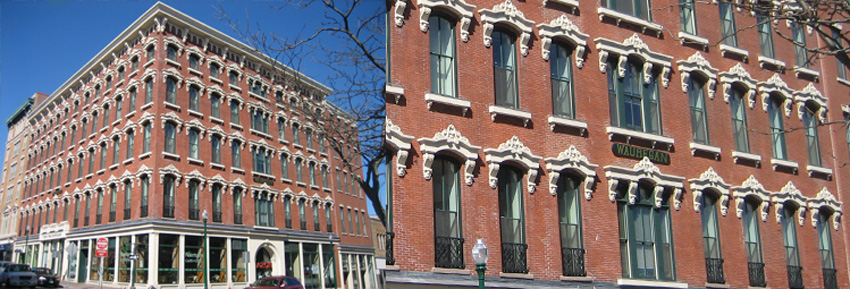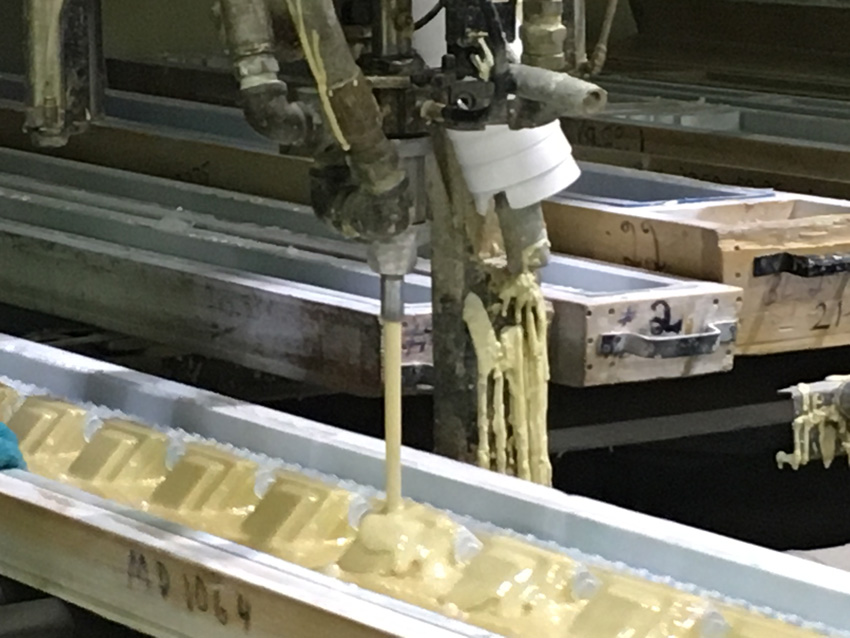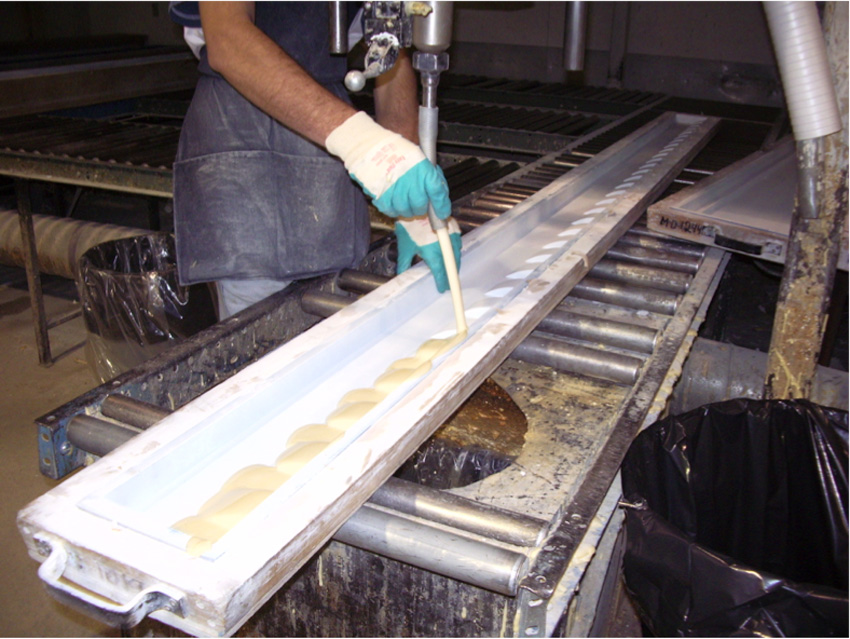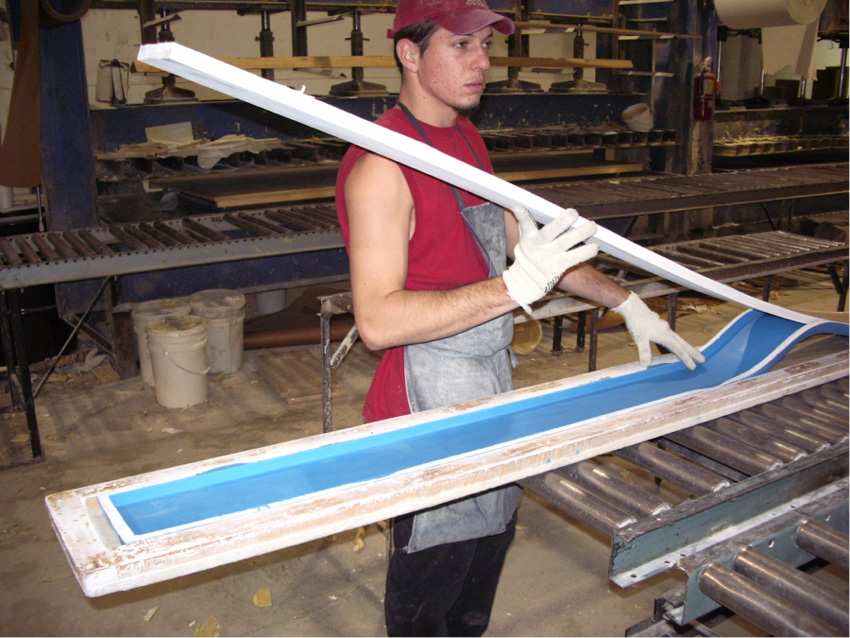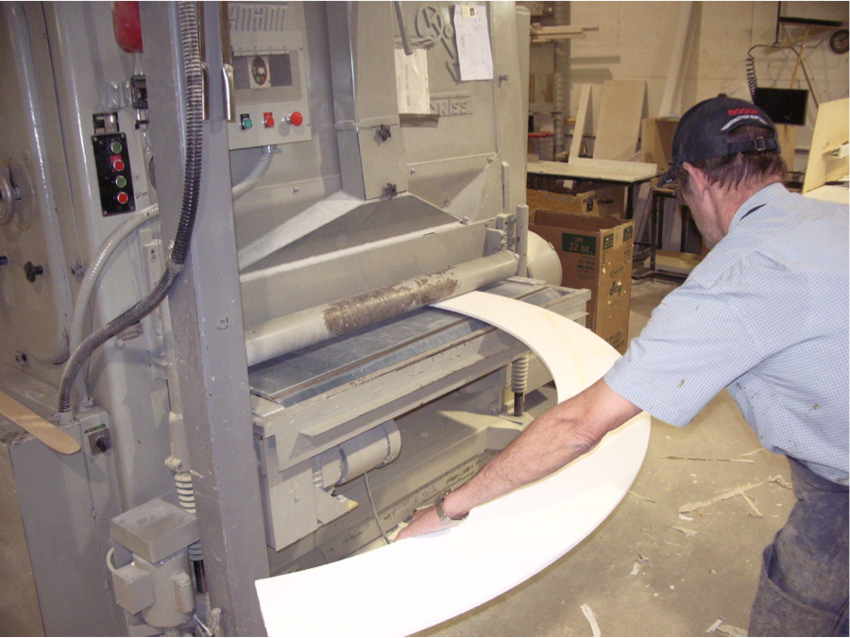Architectural Millwork: Molded vs. Fabricated
One decision impacts the entire project
![]() Continuing Education
Continuing Education
Use the following learning objectives to focus your study while reading this month’s Continuing Education article.
Learning Objectives - After reading this article, you will be able to:
- Discuss the advantages of precast molded millwork over fabricated millwork.
- Compare the advantages and disadvantages of available millwork materials.
- Examine the use of molded polyurethane in a wide range of residential and commercial applications, such as new construction, renovation, and historic reproduction, including new possibilities for custom design as well as off-the-shelf components.
- Evaluate important considerations for selecting and specifying molded polyurethane millwork, including design, manufacturing, installation, and code requirements.
Millwork is a basic component in almost every project, from a remodeled kitchen to a vast new hotel, apartment building, or casino. You can buy millwork pieces at any local hardware store. But, as with almost every other product and material, technology is changing the options available for millwork. The material chosen for the millwork is important, but even before the material is selected, one decision will have an impact on the entire project: molded or fabricated?
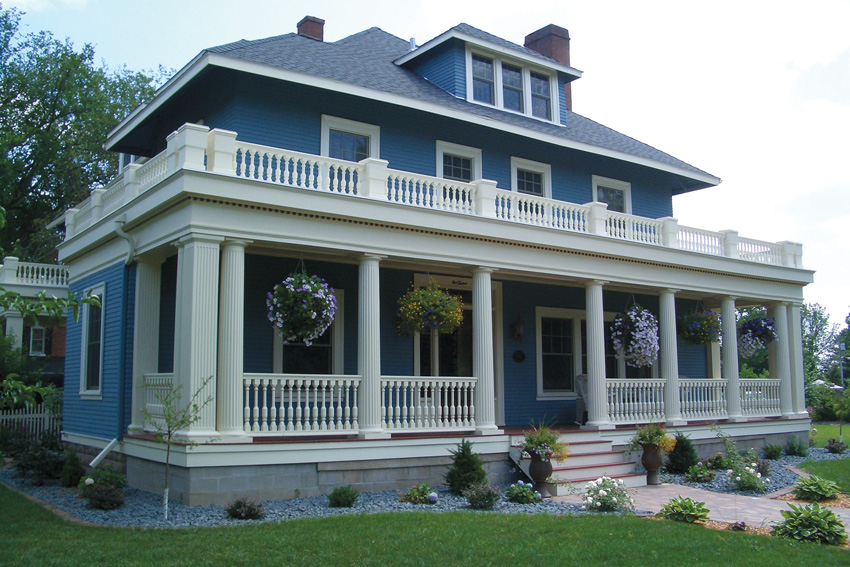
All images courtesy of Spectis Moulders Inc.
Millwork molded from high-density polyurethane can be crafted to appear identical to fabricated millwork made of common materials like wood, plaster, and PVC, but has significant performance advantages.
Today’s specialized molding manufacturers use high-density materials, computer-aided design (CAD), computer-aided manufacturing (CAM), computer numerical control (CNC), and 3-D printing, combined with traditional craft, to translate virtually any design into light, durable, economical architectural elements for any application. Designs can go from a sketch to a finished product much more quickly and efficiently than was possible in the past. This ability to create precise detail, in single pieces of any size, is based on the molding process. Molding enables the use of millwork designs that would be technically impossible or prohibitively expensive to manufacture, fabricate, and install.
This course focuses on the advantages and characteristics of molded millwork, and the process of taking millwork designs to finished elements in a wide range of projects. The course includes a comparison of the features of millwork materials, an overview of how manufacturing affects product performance, and other considerations for designers about the process of selecting and specifying molded millwork, such as installation, code considerations, and finding the most environmentally sound products.
Decision One
Because the finished millwork in a room may look very similar, it is easy to overlook the fundamental difference between molded and fabricated products. Molded millwork is created by pouring liquid resin, of varying composition, or liquid gypsum concrete, into precast molds. (The spelling “moulding” is the traditional version, reflecting the term’s origins in the 18th century woodworking craft in Britain, and still used throughout Canada, Australia, and New Zealand, while “molding” is used in the United States).
Molding allows millwork to be produced in a single section as opposed to building up numerous sections. A single molded section can be installed in a long, seamless length of any measurement. Seams are often weak places vulnerable to moisture, wear, and damage so molded millwork has many advantages, but one obvious one is the reduction in the time, labor, and difficulties involved in installing fabricated millwork.
Fabricated millwork consists of pieces cut from a sheet of material, such as wood or PVC, and then built up section by section to create the finished piece. For example, a crown molding pattern might be formed from three different pieces of wood, each shaped and cut to fit together into the desired pattern (many patterns feature more than that). So, the installers will have to install the entire length of each piece, one at a time, moving all around the space three times, carefully building up and joining the pieces to create the eventual continuous pattern. In fact, installers will need to make a complete additional pass for removing scaffolding, painting, and finishing.
But, with a molded product, the same classic crown molding, identical in appearance down to the surface details, with three or as many layers as desired, can be installed in a single light, precast piece in one trip around the space. Time and labor are reduced both for installation and for call-backs since the single piece is inherently stronger, eliminating problems—even failures—that frequently occur along areas where pieces are joined together.
Molds can be used for the entire range of millwork products from interior and exterior trim to pergolas, sunbursts, railings, and many more applications, either installed or preassembled. Some of the examples in this course include:
- Crown moldings
- Mantels
- Columns
- Ceiling medallions
- Balustrade systems
- Pergolas
- Corbels
- Louvers
- Wall Panels
- Decorative Features
Although millwork can be molded from a number of materials (discussed in more detail below), when high-quality, high-density polyurethane is used the resulting pieces are completely waterproof, will not decay, warp, or wick moisture, and are light in weight, making them economical to transport, install, and maintain. Molded polyurethane resists many of the problems that affect other types of materials, such as insects, mildew, and cracking, while providing even more options for paint colors, stains, and specialty finishes.
Molding with high-density polyurethane also enables the use of flexible forms (such as those in radius application), and the creation of minute surface textures and other details. Today’s molding process is driven by CAD and CAM, but high-density polyurethane molds can also be machined using traditional woodworker tools, and specialized manufacturers still engage the work of skilled craftspeople applying traditional methods.
A leading millwork manufacturer will have an extensive catalogue of thousands of off-the-shelf products and components, but one of the many advantages of molding is the ability to execute unlimited custom designs—an increasing part of the market. One leading company estimated that 40 percent of its work is now in the development and production of unique, custom designs. The selection of molded millwork will open a wide range of possibilities not available with fabricated millwork.
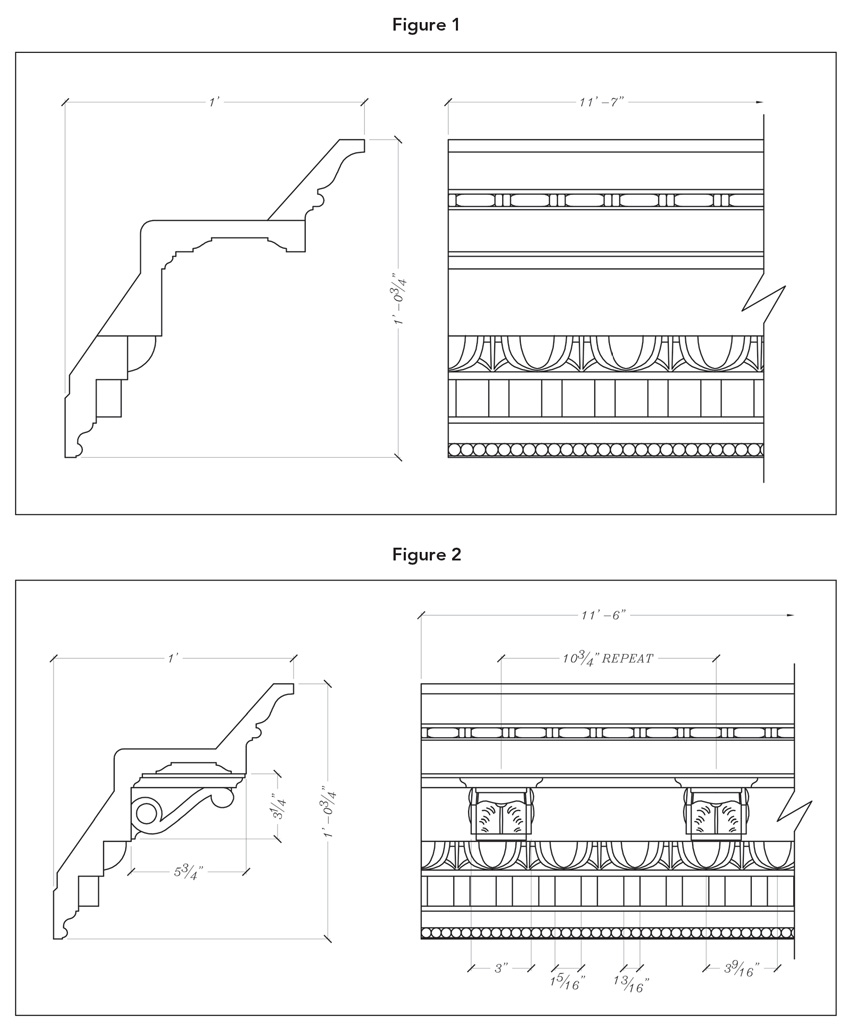
Figure 1 shows drawings for building up a fabricated molding out of three pieces. The identical profile is shown in one molded piece in Figure 2, an indication of the savings possible—in installation time and cost, and in avoiding problems that often start at seams and joined pieces.
Material Basics
Millwork traditionally is made of wood, plaster, or concrete. These are still used, along with a number of synthetic materials. Each material has its own advantages, disadvantages, and possibilities.
Wood is a familiar, plentiful material used widely all over the world for thousands of years. It can range from very low in cost, as in ordinary, inexpensive trim found in any hardware store, to very high in cost for superior wood types in handcrafted applications. Wood is easily formed into desired shapes. Wood is also considered a renewable resource and can often be recycled or reused for different applications.
Wood as a millwork material does have disadvantages, including the necessity of repeated maintenance to prevent rot, decay, and insect damage. In its ordinary forms, it is combustible, and piece sizes are limited. In the past, long lengths of wood from large, old trees were available, but today most pieces are much shorter. For example, if a piece 20 inches wide were required, it would have to be laminated from smaller pieces.
Fiberglass is another material often used for millwork. It is light, not subject to rot, and can be molded into large, one-piece sections. Fiberglass is relatively difficult to work with, however, and is combustible unless fire rated at a very high cost. Detailed shapes with undercuts cannot be made with fiberglass. Fiberglass products cannot be recycled so there are disposal issues in their life cycle.
Exterior insulation finishing systems (EIFS), on the other hand, are easy to work with and low in cost. But, EIFS will absorb and wick moisture, and they do not typically have a very durable service life, nor can they be recycled at the end. The smooth finishes associated with quality millwork are very difficult to accomplish with EIFS material.
Glass fiber reinforced gypsum (GFRG) is an inorganic mixture that provides a noncombustible product. GFRG millwork can be produced with relatively simple labor and equipment, and is recyclable, although gypsum is a raw material mined from underground, which complicates its environmental impact. It is an extremely heavy material, making it costly to produce and install, and can only be used in areas where it will not be exposed to moisture.
GFRC (Glass Fiber Reinforced Concrete) can be used in wet locations. GFRC is another noncombustible inorganic mixture that can be produced with simple labor and equipment, and is recyclable. But, like GFRG, it is basically composed of a mined raw material, heavy and expensive to produce and install.
Polyvinyl Chloride (PVC) is one of the most widely used materials in current millwork as in many other common products. PVC is a synthetic plastic polymer that also contains many chemical additives and “plasticizers.” PVC does not have many of the disadvantages of other materials since it is inexpensive, available in large sheets, and can be laminated to produce even larger workable sections, and PVC products are often recyclable.
But, for millwork, PVC has its own disadvantages. It is relatively heavy in weight and cannot be made into individual pieces economically, or installed in long, seamless lengths. PVC also contains chlorine and other chemicals whose safety and environmental impact have been questioned. When machined, PVC in general becomes porous and relatively combustible. At the current time, most PVC millwork products are not considered suitable for applications requiring a Flame Spread Rating of 25 or less (Class A FSR).

Molded high-density polyurethane is impervious to moisture, insects, and most other types of damage and decay so it is often used in large-scale exterior applications.
High-Density Polyuretheane for Millwork
High-density polyurethane solves a number of the problems with other common materials outlined above. There are many varieties of polyurethane, used in a host of common products, but high-density, chemically reacted, two-component polymer systems were invented by American chemists in the 1940s. Rigid polyurethane began to be used in commercial millwork in the 1960s. The material has a virtually limitless useful life due to its thermosetting chemical makeup.
Today, most building components are made with a higher surface density than previous polyurethanes, an average in the range of 14 to 18 pounds per cubic foot, an overall density similar to white pine. The process used to create superior-grade products provides a greater skin density than core density, which increases durability.
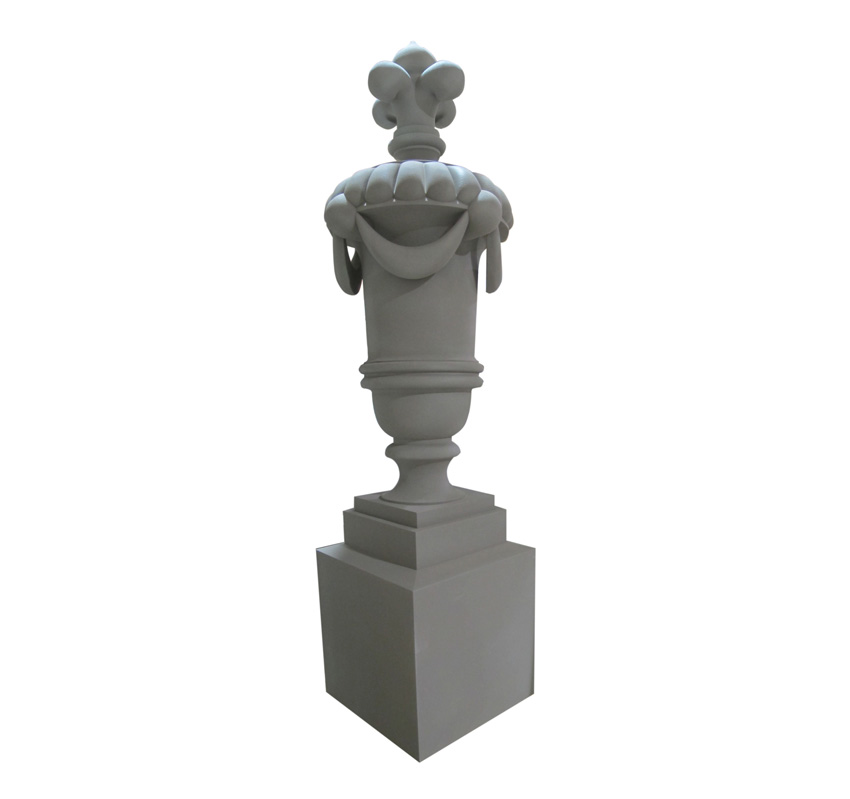
This molded polyurethane urn with a simulated terracotta finish was produced for the Jade Hotel, Greenwich Village, New York City, New York. The urn is more than 7 feet high and 2 feet wide and looks identical to natural terracotta, but weighs only about 125 pounds.
Rigid high-density polyurethane is composed almost entirely (98 to 100 percent) of closed foam. This composition not only makes the foam rigid but also hydrophobic. Millwork molded from high-density polyurethane is completely water resistant. This eliminates the possibility of rot, warping, and discoloration caused by moisture. Since it has no nutritional value for any organism, polyurethane is impervious to mold, mildew, fungus, insects, or rodents.
High-density polyurethane is light in weight and easy to transport and handle. It can be molded in a single section and installed in long, seamless lengths or made in flexible form for radius applications. Molded pieces can also be joined together to form larger components.
The material can be machined with traditional woodworking tools. Molding can reproduce minute details and any surface texture, and can be easily painted, stained, or finished. Complex shapes with extremely fine detail can be produced at low cost and in a reasonable time frame, requiring very low maintenance and much less skilled labor at most points in the process than what is needed for traditional materials like plaster, gypsum, concrete, metal, and stone.
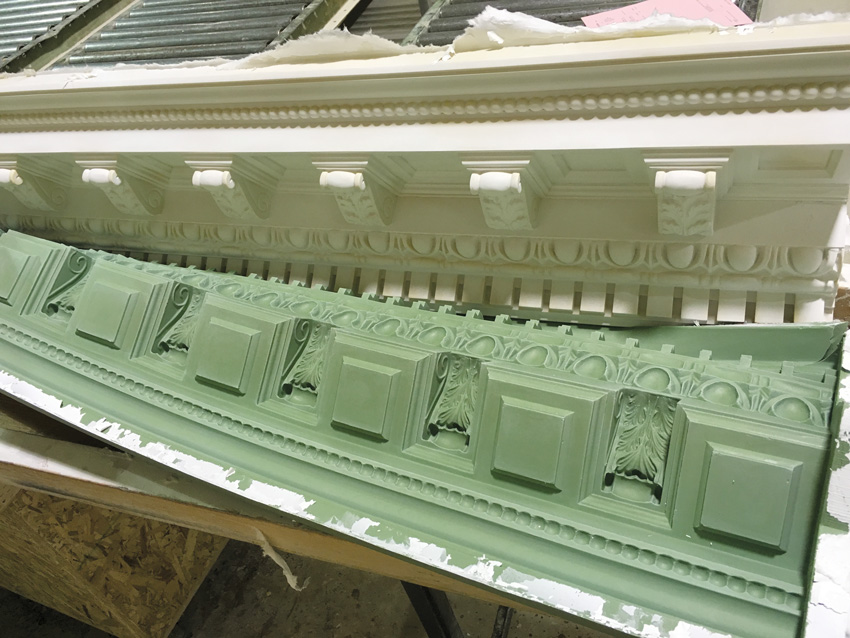
In the final steps of manufacturing, millwork can be painted, or virtually any finish or surface texture—e.g., sawn wood, stone, plaster, stucco, etc.—can be meticulously reproduced.
Using Molded Millwork
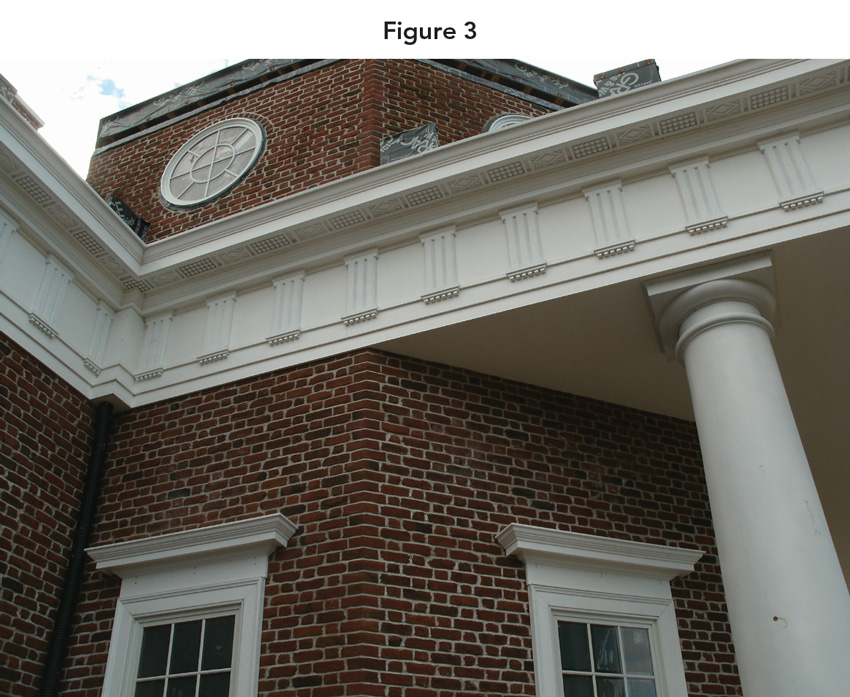
This may look exactly like a detail of Thomas Jefferson’s famous mansion in Virginia, but it is actually part of a complete, minutely accurate, full-size historic reproduction of the entire mansion, recently completed in Somers, Connecticut. Many of the materials used are identical to the originals at Monticello, such as the handmade red brick on the exterior and the copper downspouts. But, the precisely reproduced exterior and interior trim and other millwork details are cast from molded polyurethane.
As mentioned above, the catalogues of some molded millwork manufacturers will include thousands of components that can be ordered off the shelf so for many projects the specification process is streamlined. But, some manufacturers specializing in custom designs can take the concepts of an architect from idea to sketch to finished product. For example, Figure 4 is the shop drawing developed for the custom peaked trellis in Figure 5.
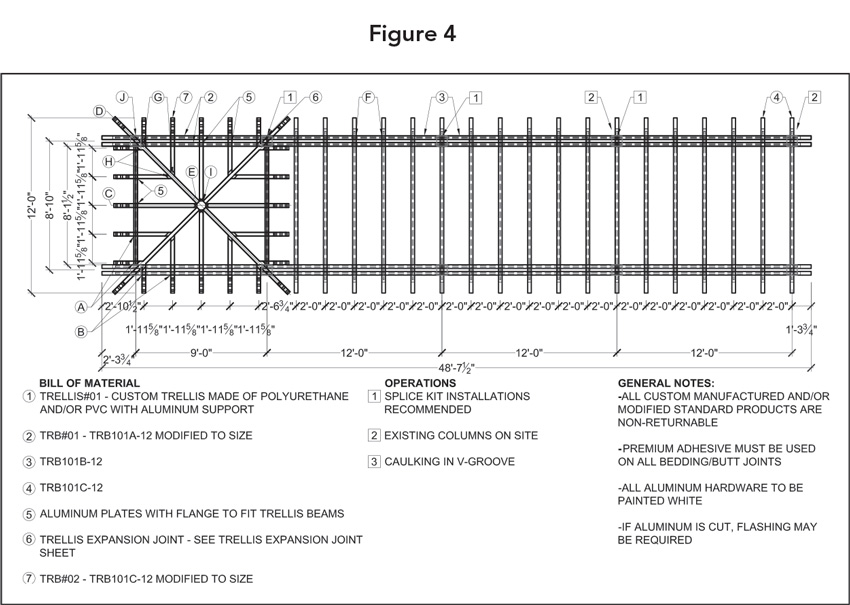
Shop drawing for trellis
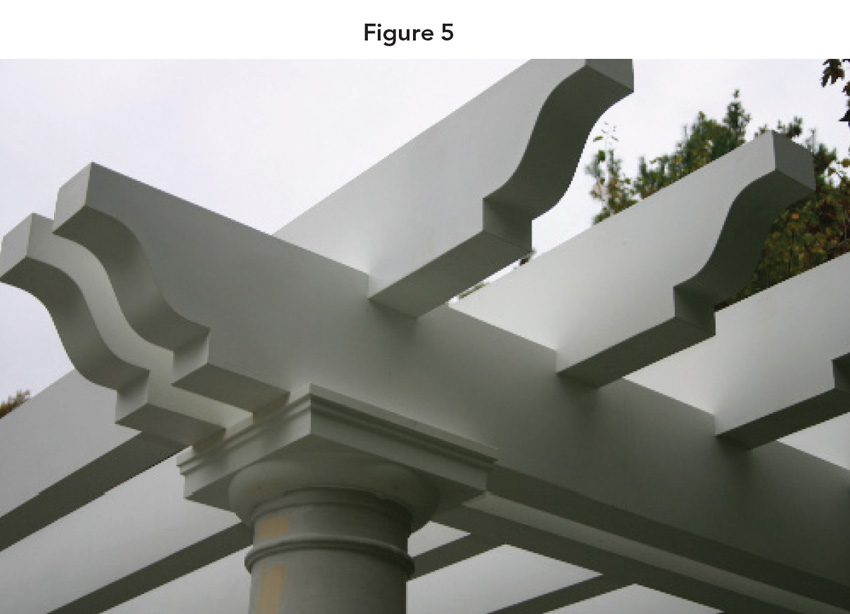
Finished trellis
The process is often used for creating original, brand-new designs. But, it can just as easily be used to make meticulous reproductions of existing pieces of millwork for historic renovations or for using past forms as inspirations for new projects. In Figure 6, deteriorated building components were reproduced in high-density polyurethane. In the reproduction of Thomas Jefferson’s Monticello shown in Figure 3, the challenge for the architects was to recreate an accurate, authentic appearance for a sophisticated new home with a modern floor plan, features, and amenities. (One other advantage of modern materials: the reproduction “Monticello” was completed in 15 months as opposed to the decades lavished on the original.)
See sidebar “Old Is New Again” for other examples.

Before and after
The technology, process, and materials in these projects can be applied to virtually any millwork application. A sample specification section for a molding is shown at the end of this course.
Some of the key basic choices to be considered include:
Surfaces
Very detailed, custom surface textures and finishes can be specified. For other types of products, millwork can be shipped with a paint/primer, ideally guaranteed for at least five years. This standard paint is ready to accept field-applied finish coats of paint as required. During the installation process, discussed further below, screws are typically installed through the face of the product so most will require a final coat of paint after the product is installed, and any screw holes or seams can be repaired. Dark colors are desired in high solar gain areas, and premium, long-lasting paints are recommended.
But, the options for custom surfaces go far beyond paint. One of the major advantages of molded polyurethane is the ability to create surfaces that closely simulate almost any other material, including (but not limited to) different varieties of stone, concrete, plaster, and wood. An exact silicone rubber mold is created from one relatively small piece of the natural material, which can then be reproduced in any size or quantity. For example, pecky cypress is a highly desirable material particularly in the American South. In the wild, the distinctive appearance of the wood is created by a fungus, mainly in Florida swamp areas, and using the wood in a sizeable project might require cutting down several hundred trees. But, the appearance of pecky wood can be created in a mold from a relatively small amount of actual wood, probably about half of one tree, simulated with minute accuracy, and then produced in large quantities for a much smaller cost and even smaller impact on the existing forest. The same is true of sawn wood, another distinctive wood look that can require cutting down trees and then manually scraping and distressing each piece of wood—or it can be recreated in molded polyurethane in whatever size and quantity is required.
Adhesives
High-quality adhesive is essential to the long-term durability of the component. Failure to use the right adhesive with the right procedure can be the source of completely avoidable future problems. Ideally, the millwork manufacturer will have developed proprietary formulas to work with its specific product material and installation methods, and to provide fast curing and exceptional strength in all climates (with some products, bonds can be made in temperatures ranging from -18 degrees Celsius [0 degrees Fahrenheit] to 204 degrees Celsius [400 degrees Fahrenheit]). The most advanced adhesives are environmentally safer than conventional adhesives, with low toxicity and very low odor, and are waterproof and nonflammable/noncombustible.
As with almost every building component, material, and product, installation will ultimately determine the success of even the most brilliant and carefully engineered design. The correct type and proper use of adhesives and fasteners is perhaps the single most important consideration during installation of millwork. Manufacturers should give detailed instructions and support for correct installation of their products.
Code Considerations
Most polyurethane molding products in general are not fire rated. They can be used for most residential interiors and exteriors, and most commercial exteriors. But, some manufacturers have the capabilities to provide polyurethane millwork products with either Class A (1) or Class B (2) fire ratings as tested by Underwriters Laboratories in accordance with UL 723: Test for Surface Burning Characteristics of Building Materials. (A full-service manufacturer would also be able to mold millwork from noncombustible materials like gypsum or concrete if the application required them.) The fire-rated polyurethane products are composed of material with specific chemical components. For some applications, fire-rated products are also finished with a specific coating.
Products of a quality manufacturer will meet structural code requirements throughout the United States, a particularly important requirement for components like railings and columns. In addition, some areas have their own state or local requirements; for example, in areas where hurricane risk is high. A manufacturer should be able to analyze code requirements, develop a testing process, design and engineer a code-compliant product, and coordinate independent testing to meet all relevant codes. Some manufacturers have extensive experience in providing these services.
Working with the Manufacturer
Manufacturers should have the expertise and experience to be an effective partner, able to provide detailed support for designing, drawing, and specifying a finished product that realizes the designer’s vision for the project and meets all requirements, including codes or local provisions, such as for historic preservation. CAD drawings and specification sections, as well as detailed installation information, should be easily downloaded from the company website, along with direct advice and support.
Companies also differ in their corporate commitment to using sustainable manufacturing processes and providing products with minimal adverse effect on the environment.
A few examples of what to look for in a molded millwork manufacturer:
- Minimum five-year warranty
- Excellent instructions and technical resources, readily accessible, including CAD and shop drawings
- Physical testing of products
- Color samples and production samples
- Products made without CFCs, HCFCs, or any other ozone depleting compound
- Use of water-based coatings and paints that exceed performance required by VOC regulations
- Products with zero emission of toxic gases
- Use of materials containing post-consumer content to reduce landfill loading
- Routing of all waste materials for recycling
The selection of molded high-density polyurethane millwork will open a wide range of possibilities not available with fabricated millwork. High-quality, high-density polyurethane material is impervious to moisture and insects, won’t decay or warp, and is economical to transport, install, and maintain. Molded polyurethane can be used to create precise detail in single pieces of any size, enabling the use of flexible forms for components that would be technically impossible or prohibitively expensive to produce and install with conventional materials. Today’s specialized molding manufacturers combine innovative technology with traditional craft to translate the newest original designs or transform the most treasured historic ones into light, durable, economical architectural elements.

|
Spectis Moulders Inc. specializes in producing unique custom moulded and fabricated products. The company policy is “We will build anything!” Spectis has complete design, engineering, and drafting capabilities, enabling it to work from very simple sketches to develop and produce just about any product with impeccable detail and quality. www.spectis.com. |


